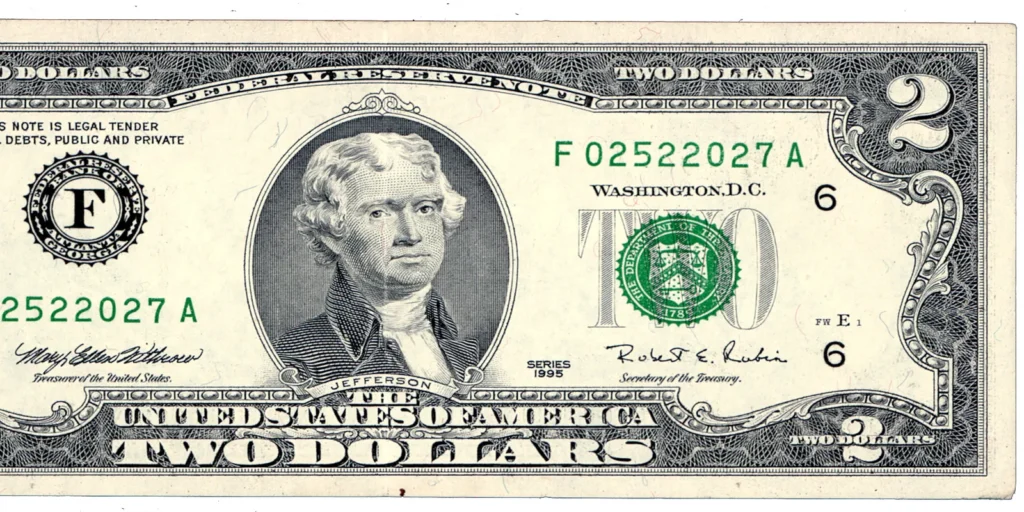Are $2 Bills Worth More Than Their Face Value? Here’s What You Need to Know
While most people think of $2 bills as just another form of cash, some of these bills can actually be worth much more than their face value. In rare cases, collectors have paid up to $20,000 for a single $2 bill. These high prices are often due to unique features like special serial numbers, historical significance, or exceptional condition. If you have a $2 bill lying around, it’s worth taking a closer look—it could be a hidden treasure.
A Brief History of the $2 Bill
The $2 bill has been part of U.S. currency since the 1860s. Over the years, the design has changed several times, but since 1928, Thomas Jefferson has been featured on the front. The back typically showcases either Jefferson’s home, Monticello, or the signing of the Declaration of Independence. Despite its long history, the $2 bill is not commonly used in daily transactions, making it feel rare and special to many people.
What Makes a $2 Bill Valuable?
Not all $2 bills are worth more than $2. The value depends on a few key factors:
1. Serial Numbers
Serial numbers can significantly increase a bill’s worth. Collectors look for specific patterns, such as:
- Solid Numbers: All digits are the same (e.g., 77777777).
- Ladder Numbers: Numbers in a sequence, like 12345678.
- Low Numbers: Serial numbers starting with “1” are particularly valuable, especially on bills printed in 1976.
These patterns are rare, and their uniqueness makes them highly sought after by collectors.
2. Year and Seal Color
Older bills and those with unique seal colors can fetch higher prices:
- Bills printed between 1862 and 1917 with red, brown, or blue seals are especially valuable, often worth up to $1,000.
- Generally, the older the bill, the higher its potential value, especially if it’s in good condition.

3. Condition
A bill’s condition is one of the most critical factors in determining its value. Collectors favor bills in mint or “uncirculated” condition, meaning they:
- Have no wrinkles, folds, or creases.
- Are free from rips, tears, or stains.
- Show no discoloration.
Even small imperfections can reduce a bill’s value, so proper storage is essential.
How to Determine the Value of a $2 Bill
There are several ways to calculate the worth of a $2 bill:
- Catalog Value: The average market price for similar bills.
- Purchase Price: What a dealer might pay to buy it from you.
- Retail Value: The price a collector or buyer would pay to own it.
- Wholesale Value: The price dealers might charge one another.
Market trends and collector demand often influence these values, so it’s important to research current prices before selling.
Steps to Check If Your $2 Bill Is Valuable
To find out if your $2 bill is worth more than face value, follow these steps:
- Inspect the Serial Number: Look for unique patterns like solid, ladder, or low numbers.
- Check the Year of Issue: Older bills, especially those from before 1920, tend to be more valuable.
- Examine Its Condition: Bills in near-perfect condition are significantly more desirable.
- Research Its Rarity: Investigate how many bills were printed that year and how many remain in circulation.
How and Where to Sell Valuable $2 Bills
If you discover that your $2 bill is valuable, you can sell it through auction houses like Heritage Auctions or Stack’s Bowers, which specialize in collectible currency. Before selling, consider having your bill authenticated and graded by services like the Professional Coin Grading Service (PCGS). They can confirm its authenticity and condition, which often helps attract higher offers from buyers.
What If Your $2 Bill Isn’t Valuable?
Even if your $2 bill doesn’t have any rare features, it’s still a fascinating piece of American history. Many people enjoy keeping these bills as souvenirs or conversation pieces. Who knows—collector interest might grow over time, and your bill could become more valuable in the future.
